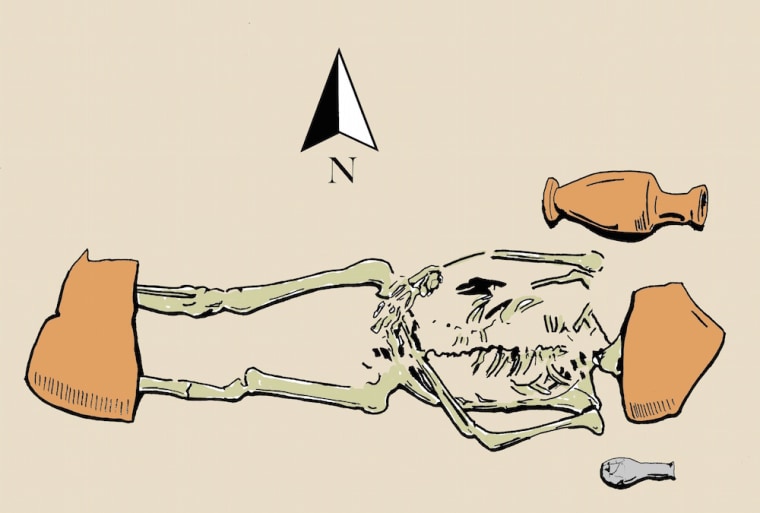Ancient supernatural practices may explain why two Grecian graves contain skeletons that are pinned down with heavy objects and rocks, almost as though people wanted to trap the bodies underground, a new article finds.
Archaeologists have known about these two peculiar burials since the 1980s, when they uncovered the graves along with nearly 3,000 others at an ancient Greek necropolis in Sicily. But a new analysis suggests the two graves contained so-called "revenants," dead bodies thought to have the ability to reanimate, leave their graves and harm the living — essentially an ancient version of zombies.

"Revenants could be trapped in their graves by being tied, staked, flipped onto their stomachs, buried exceptionally deep or pinned with rocks or other heavy objects," Carrie Sulosky Weaver wrote in the article, published June 11 in the online magazine Popular Archaeology.
The head and feet of the person in one grave were covered with "large amphora fragments… a large, two-handled ceramic vessel that was typically used for storing liquids," she wrote in the article. Another grave contains the skeleton of a child, likely age 8 to 13. Five large stones were placed on top of it, possibly to stop a revenant from leaving the grave, Sulosky Weaver said.
Evidence of these superstitions suggests the ancient Greeks didn't live in fear of the dead, but thought that some dead people could be dangerous or useful to the living, she said.
"Some chose to recruit the dead to achieve specific goals, while others chose to trap potentially dangerous bodies in their graves to keep the living members of the community safe," Sulosky Weaver said. "These activities shed light on some of the lesser-known facets of Greek funerary practice."
This is a condensed version of a report from Live Science. Read the full report. Follow Laura Geggel on Twitter @LauraGeggel. Follow Live Science @livescience, Facebook & Google+.
